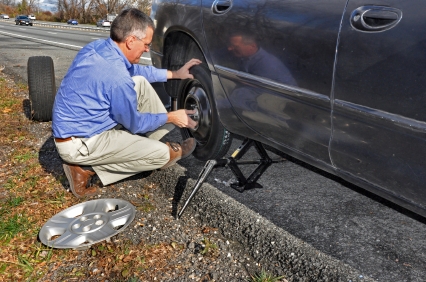Gas prices may be lower today than they were several years ago, but that doesn’t mean they’re going to stay there, or that drivers aren’t interested in steps they can take now to increase vehicle fuel economy or fuel mileage and deliver significant savings at the pump.
Two main factors impacting a vehicle’s fuel economy are the driver and the vehicle’s mechanical system. Here’s how factors associated with each can impact fuel mileage, and the actions drivers can take to squeeze additional miles from a gallon of gas and keep more money in their pocket.
Check the vehicle’s tire pressure.
Underinflated tires increase a vehicle’s rolling resistance, forcing the engine to work harder to move the vehicle down the road, which in turn decreases fuel mileage. Look for the recommended tire inflation pressure on a sticker that is inside the driver’s doorframe on nearly every vehicle. When the tires are cold, use a pressure gauge to measure each tire’s pressure. Compare that to the recommended pressure and inflate the tire as needed. Check tire pressures monthly or at every fill up.
Choose a “highway” tire tread pattern.
Aggressive tread patterns, like those that provide enhanced traction in snow or for off-road driving, increase rolling resistance when driving at higher speeds on highways, which in turn decreases fuel mileage. Instead, choose a tire with a less aggressive tread more suited to highway driving.
Give your vehicle a tune up and stay on top of scheduled maintenance.
Many of the parts and fluids under the hood are wear items and need to be replaced at regular intervals based on vehicle manufacturer guidelines and/or your mechanic’s recommendation. Maintenance that is neglected leads to a vehicle that isn’t performing at its peak and one that’s burning more fuel than it should be.
Give your vehicle a tune up and stay on top of scheduled maintenance.
Many of the parts and fluids under the hood are wear items and need to be replaced at regular intervals based on vehicle manufacturer guidelines and/or your mechanic’s recommendation. Maintenance that is neglected leads to a vehicle that isn’t performing at its peak and one that’s burning more fuel than it should be.
Adjust your driving style
Aggressive, “Jackrabbit” starts from a traffic light or stop sign, excessive idling, and high-speed driving all contribute to a significant decrease in fuel mileage. Follow the advice many drivers received during drivers ed classes – imagine there’s an egg between your foot and the gas pedal and use gentle pressure when accelerating. An additional 10 to 15 percent improvement in fuel economy can also be gained from driving at 55 mph as compared to 65 mph, as mileage decreases dramatically at speeds above 60 mph. Idling also decreases fuel mileage because the engine is running but the vehicle isn’t going anywhere.
Remove excess weight from the vehicle
Every extra pound stored in the vehicle negatively impacts fuel mileage. Look in the trunk, hatchback area, pickup truck bed, and even on roof racks for opportunities to eliminate cargo that adds unwanted pounds to the vehicle and needlessly increases fuel consumption.
Before implementing these fuel-saving strategies, track your vehicle’s fuel mileage for a tank or two and then compare it to the mileage achieved after taking steps to increase fuel efficiency. Was there a difference? It’s also a good idea to monitor the vehicle’s fuel mileage periodically, if it isn’t already displayed on one of the dashboard readouts, because a significantly lower-than-average fuel mileage could indicate a problem.



